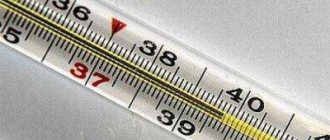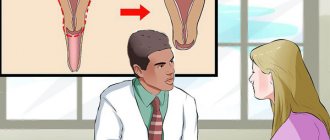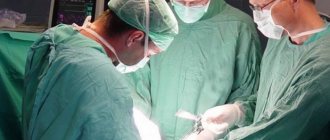If a gynecologist advises a patient to have the uterus removed, the consequences for the woman’s body can be different, and you need to know about them before the intervention. The operation, which in medicine is called hysterectomy, is difficult in terms of the high probability of developing various complications. It is done according to strict indications, and, in most cases, for women who have already reached the age of 40 or more.
If tumor formations are detected or secondary cancerous foci are identified, the uterus is removed. The consequences for the body, reviews of specialists and the women themselves must be considered in detail, since after such an intervention the patient will never be able to have children. It is also worth noting that in rare cases, a hysterectomy is performed when it is necessary to save the life of the mother and child, if there are no other options for achieving this task.
Indications
Before understanding how removal of the uterus affects a woman’s body, it is necessary to understand under what pathological processes the hysterectomy procedure can be performed. The bottom line is that the bulk of interventions are performed on patients who do not realize the severity of possible complications.
Also, some agree to surgery due to the lack of necessary information and insufficient awareness of this topic, that is, women believe that the method of therapy proposed by the doctor is the only possible way to save their life, as well as get rid of the disease.
Removal of the uterus is performed when the reproductive organs prolapse
The risks of removing the uterus, the consequences for the body, and reviews from doctors will be discussed further. First, let's look at the indications for intervention:
- Violation of the natural position of the organ (the uterus prolapses or descends);
- Presence of oncological pathologies;
- Hardening of the walls of the uterus;
- Benign tumors localized on the muscle layer of the organ;
- Proliferation of the endometrial layer of the uterus;
- Metastases and multiple polyps;
- Infection during labor;
- Heavy bleeding and severe pain that have no connection with the menstrual cycle.
You don’t need to be a doctor to understand that a woman will definitely have certain problems after removal of the uterus related to her health, because the reproductive system will no longer work as before. However, if these diseases are identified at an early stage, with a high degree of probability, treatment can be carried out using a less radical method, which is why doctors insist on the need for regular visits to the gynecologist.
Removal of the uterus with appendages
Whether the cervix is left or removed during a hysterectomy depends on the condition of the cervix and the risks associated with retaining it.
If the cervix is left, this is the most favorable situation possible.
On the one hand, due to the preserved ovaries, the hormonal system continues to function more or less normally. But why do they leave the cervix when removing the uterus? Preserving the cervix allows you to maintain the length of the vagina, and after restoration the woman will be able to lead a full sex life.
Removal of the uterus without appendages, but with the cervix, is a more traumatic operation.
By leaving the ovaries, the surgeon allows the woman to maintain normal hormonal levels. If the operation is performed at a young age, the ovaries can avoid menopause and all the associated health consequences.
But even after removal of the uterus without appendages, the anatomical relationship of the organs is disrupted. As a result, their function is impaired.
In addition, complete removal of the uterus, even with preservation of the ovaries, leads to shortening of the vagina. In many cases, this is not critical for sex life. But the anatomy of the organ is different for everyone, and not all women manage to adapt.
This is the most traumatic operation that requires a lot of recovery time.
It requires serious hormonal correction and usually causes all the most severe consequences, especially if performed at the age of 40-50 years - that is, before the onset of natural menopause.
I will tell you more about the most common consequences of hysterectomy below. The most unpleasant thing is that all these consequences are irreversible and practically impossible to correct.
This is a fairly common complication in cases where the ovaries are preserved after removal of the uterus. This is how the negative impact of the operation itself manifests itself.
To understand the nature of the cyst, you must first understand how the ovaries work.
In fact, the cyst is a natural process that occurs every month in the ovary under the influence of hormones and is called a follicular cyst. If the egg is not fertilized, the cyst bursts and menstruation begins.
Now let's see what happens to the ovaries after removal of the uterus.
The uterus itself does not produce hormones. And many surgeons assure that after its removal the hormonal levels will not change. But they forget to say how closely the uterus is connected to other organs. When separating the ovaries from the uterus, the surgeon inevitably disrupts the blood supply and injures them. As a result, the functioning of the ovaries is disrupted, and their hormonal activity decreases.
Unlike the uterus, the ovaries produce hormones. Disturbances in the functioning of the ovaries lead to disruption of hormonal levels and the process of follicle maturation. The cyst does not resolve, but continues to grow.
It takes about 6 months to restore the full functioning of the ovaries and level out hormonal levels. But not always everything ends well, and the enlarged cyst resolves. Often, repeated surgery is required to remove an overgrown cyst - with large tumors there is a risk of rupture and bleeding.
If, several months after removal of the uterus, pain appears in the lower abdomen, which increases over time, you should visit a gynecologist. The most likely reason why the ovary hurts is an overgrown cyst.
The likelihood of developing this complication is only 50% dependent on the skill of the surgeon. Every woman's anatomy is unique. It is not possible to predict the location of the ovaries and their behavior before surgery, so no one can predict the development of a cyst after removal of the uterus.
Methods
What happens if the uterus is removed depends not only on the diagnosis, as well as the correctness of the recovery period, but also on the method by which the procedure was performed. If the intervention is performed through an incision in the lower abdomen, then the abdominal approach is used. They resort to the technique provided that the patient’s organ size is too large, which often happens with adhesions, tumors with metastases, oncology and endometriosis.
After removal of the uterus, reviews from women confirm this, the recovery period is quite difficult and long. During the entire rehabilitation period, you will need to wear a special medical bandage, which will help reduce pain and speed up healing.
Laparoscopic hysterectomy
Laparoscopic hysterectomy is considered more gentle. How such a procedure affects a woman’s body can be answered by a doctor. A distinctive feature of the intervention is that it is performed using a laparoscope through several small incisions in the lower abdomen.
There is also such a technique as vaginal hysterectomy. The consequences and reviews of the procedure are the most satisfactory, because it is performed through natural means, therefore, there are no scars left on the body, and the recovery period does not take much time.
Consequence 5. Sex after hysterectomy
Women who have undergone vaginal hysterectomy should remain in sexual rest for at least 2 months until the internal sutures heal. In all other cases, sex can be had 1-1.5 months after the operation.
Sex life after removal of the uterus undergoes changes.
In general, women are concerned about vaginal dryness, burning after intercourse, discomfort, and pain. This occurs due to a drop in estrogen levels, which causes the genital mucosa to become thinner and begin to produce less lubricant. Hormonal imbalance reduces libido and interest in sexual life decreases.
- Removal of the uterus and appendages most strongly affects the intimate side of life, since the lack of female hormones leads to frigidity.
- Removal of the uterine body has little effect on intimate life. Vaginal dryness and decreased libido may occur.
- Removal of the uterus and cervix leads to shortening of the vagina, which makes sex difficult after surgery.
Complications
First of all, it must be said that regardless of the type of intervention, the doctor will use anesthesia. Against this background, when the anesthesia wears off, a woman may feel dizzy after surgery to remove the uterus. This complication can probably be considered one of the safest, since it goes away on its own after a few hours.
Depending on the extent of the intervention, complications may vary, and this is confirmed by medical reviews. After surgery, during which the uterus was removed together with the appendages, fallopian tubes and ovaries (total resection), menstruation stops. A woman's body enters what is called surgical menopause.
Since menopause is considered normal for women over the age of 40, young girls may wonder whether hysterectomy affects the aging of the body. There is definitely a definite impact, because the reproductive system works differently, and estrogen is produced in small quantities.
Against this background, the patient may experience symptoms of menopause, such as sleep disturbance, anxiety, depression of the psycho-emotional state, hot flashes, and all this occurs in conjunction with pain, which is a consequence of the operation. Doctors suggest treating this condition through hormone replacement therapy.
When performing a subtotal hysterectomy, when only the organ is removed, but the ovaries, appendages and cervix are preserved, the complications are not so serious. The body does not enter a state of menopause; the woman continues to menstruate, but she can no longer bear children. In this case, you can get serious psychological trauma.
Thus, answering the question whether removal of the uterus is dangerous, we can definitely say that the procedure harms the body in a complex way, therefore, if possible, it is necessary to resort to various, not so radical, methods of treatment.
Consequences
If you ask the doctor what the hysterectomy entails, he will immediately be able to tell the patient several of the most common complications of the procedure. If other treatment methods do not achieve the desired effect, then a hysterectomy is performed. In this case, each patient, even before the procedure, must clearly understand the dangers of removing the uterus, so it is worth considering several possible consequences.
Urinary incontinence
Patients may develop a condition such as urinary incontinence after surgery to remove the uterus. It is directly related to the anatomical features of the female body. The essence of the problem is that the genitourinary and reproductive organs are in close proximity to each other, and are held in the required position with the help of ligaments and muscles.
The bladder may also begin to work differently after removal of the uterus. There are several reasons for this:
- Due to the patient’s age, she has flabby muscle tissue that is not able to fix the organ well;
- The sphincter muscles responsible for controlling urination are weakened;
- Low level of estrogen produced in the body;
- Development of the inflammatory process;
- Prolapse of the anterior vaginal wall;
- Psychological trauma.
After removal of the uterus, urinary incontinence occurs in a large number of women, but in most cases, those who had congenital anomalies of the urinary system, previously injured these organs, have chronic diseases such as bronchitis, diabetes, and suffer from obesity.
In such a situation, many are wondering what to do. Urinary incontinence after hysterectomy should be treated by the attending physician. To do this, he can advise the woman on the correct medication treatment, physiotherapeutic procedures, proper dietary nutrition and gymnastic exercises.
Pain
Many patients complain that after removal of the uterus, their lower back or back in general hurts. This is largely due to changes in the anatomy of the reproductive organs, which leads to an unnatural position of the bladder and slight deformation of the spine. Against this background, such uncomfortable sensations develop.
Another most common complaint is that a woman has abdominal pain after having her uterus removed. The development of such a syndrome is possible both in the early and late periods of recovery after surgery. First of all, doctors say that the discomfort occurs due to the fact that there is inflammation of the stump after removal of the uterus (surgical suture).
In the first days when a woman has undergone the intervention, she may feel very painful sensations. To relieve them, doctors prescribe specific medications, including those that eliminate inflammatory processes.
When, after removal of the uterus and appendages, the lower abdomen hurts, but a lot of time has passed since the operation, such sensations are associated with the formation of adhesions, prolapse or prolapse of the vagina, and the development of mastopathy. If you have any disturbing sensations, you should contact a gynecologist who can diagnose the pathological process and prescribe the correct treatment.
Some women experience leg pain after a hysterectomy. Often this condition is associated with the fact that there is an infection in the patient’s blood or body that needs to be destroyed. The development of thromboembolism of the pulmonary artery or veins of the lower extremities is also possible. All this must be treated, but carrying out therapy on your own is strictly prohibited.
It is important to understand that the temperature may increase slightly after hysterectomy surgery. In the first few days this is considered normal and no correction is required. However, when a woman notices that after removal of the uterus the temperature remains consistently high and the medication is not removed, she should go to the hospital to exclude the possibility of infection.
Intestines
Constipation after surgery to remove the uterus can be observed in patients for a month after the intervention. In addition to difficulty defecating, this condition is accompanied by pain in the abdomen, which does not go away, even if you take medications. The main reason that a woman has problems with the intestines after removal of the uterus is the formation of adhesions.
If this problem is not eliminated in a timely manner, then intoxication of the body with harmful substances contained in feces is possible. So, for example, a woman will begin to feel unwell, her body temperature will rise, some even notice that their belly is growing after removal of the uterus in the presence of prolonged constipation.
After visiting a doctor who will conduct a thorough diagnosis, the woman should receive an individual treatment program. It should contain information about what diet to follow, the necessary gymnastic exercises, how much fluid to drink, and how to administer microenemas.
Other
If the patient has had a partial hysterectomy, some of the reproductive organs are preserved. It may happen that during the recovery period the doctor discovers cervical cysts after removal of the uterus. This is a very serious complication of the operation, which requires immediate treatment, namely, removal of pathological formations.
Cyst on the cervix
Another unpleasant consequence is a hernia after removal of the uterus. It forms in the place where the specialist applied a medical suture. Often, the formation is formed in those patients who underwent the procedure using the traditional method and made a significant incision in the abdominal tissue.
A hernia may not appear immediately, and the danger of its occurrence persists for another two years after the operation, because this is exactly the time required for a scar to finally form at the site of the incision.
Treatment boils down to closing the hernial orifice, that is, its removal is required. It is important to understand that such a hernia is very complex and dangerous, so the operation must be performed by a highly qualified surgeon.
Sometimes experts diagnose a condition such as pericultitis after removal of the uterus, which is also called cellulitis of the vaginal stump. The complication is infectious and occurs after pathogenic bacteria damage the surgical edges of the upper part of the vagina.
Symptoms may occur immediately or after the woman has been discharged from the hospital. The patient feels pain in the pelvic region, lower abdomen, and there is also pathological discharge from the vagina. Treatment is carried out by prescribing a therapeutic drug course consisting of one or two types of antibiotics of different spectrum of action.
Consequence 8. Prolapse after hysterectomy
After removal of the uterus, the anatomical location of organs is disrupted, muscles, nerves and blood vessels are injured, and the blood supply to the pelvic area is disrupted. The frame that supports the organs in a certain position ceases to perform its functions.
All this leads to displacement and prolapse of internal organs - primarily the intestines and bladder. Extensive adhesions aggravate the problem.
This is manifested by numerous increasing problems with the intestines and urinary incontinence during physical activity and coughing.
Reviews
If a woman is prescribed an operation such as removal of the uterus and cervix, the consequences, reviews of doctors and women who have undergone this procedure concern many patients. Opinions regarding intervention differ dramatically. Some girls say that this was the only opportunity to save their own life.
Others convince us of the need to look for alternative methods of therapy, since hysterectomy is dangerous not only for the development of serious psycho-emotional complications, but also for many pathological processes affecting the reproductive organs and reproductive system. It is very important before the operation to carefully weigh all the positive and negative aspects, and only after that decide whether to agree to have the uterus removed or not.









